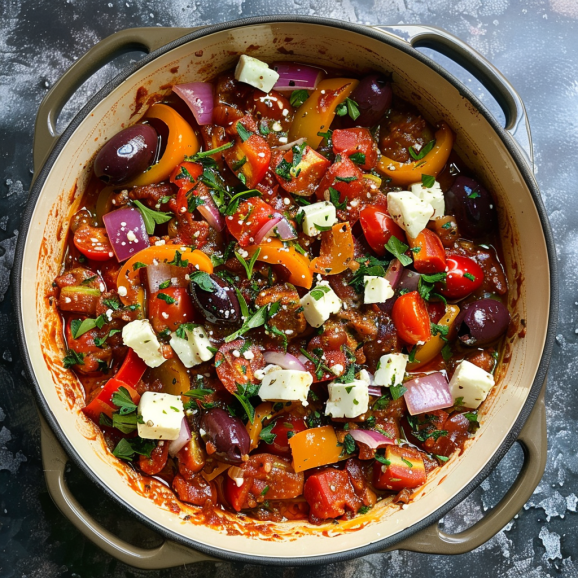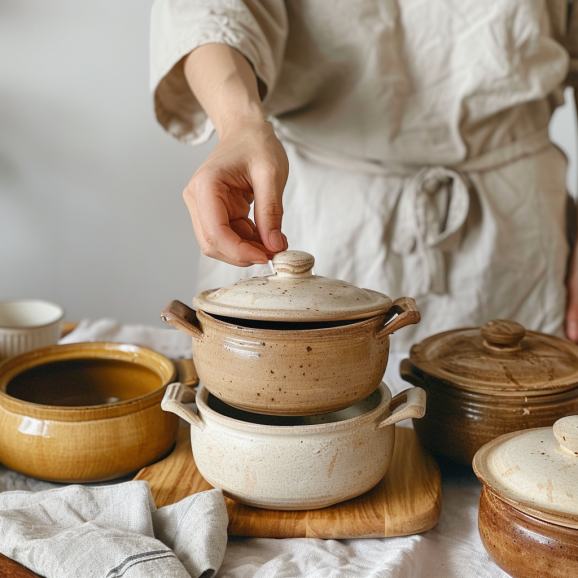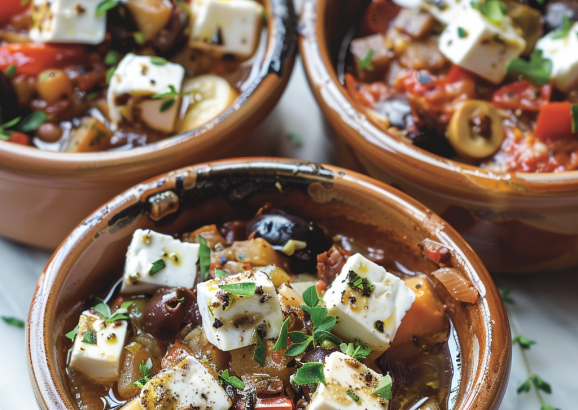
Introduction
Cooking with Greek clay pots, known as “gastra” in Greece, is a culinary tradition that dates back thousands of years, offering a unique approach to flavors and textures that modern cooking methods struggle to replicate. These terracotta vessels have been used to slow-cook food, allowing the natural aromas and juices to intermingle and create dishes that are both nutritious and intensely flavorful. This article explores the art of cooking with Greek clay pots, offering insights into both the historical significance and practical techniques for making the most out of these ancient culinary tools.
The Historical Significance of Greek Clay Pots
Cooking with Greek clay pots are more than just cooking utensils; they are a link to the culinary past of Greece. Historically, these pots were used for a variety of purposes, from storing wine and olive oil to baking bread and cooking stews. The porous nature of clay allows for slow evaporation of steam during the cooking process, which not only helps to cook food evenly but also enhances the natural flavors by concentrating them.
Choosing the Right Greek Clay Pot

Selecting the right clay pot is crucial for achieving the best cooking results. Traditional Cooking with Greek clay pots are unglazed, which allows them to absorb and redistribute moisture during cooking. When choosing a pot, consider its size relative to the dish you plan to cook, as well as its shape. Round pots are ideal for stews and braised dishes, while flat, wide pots are better suited for baking and roasting.
Preparation and Maintenance of Greek Clay Pots
Before using a new clay pot for the first time, it is essential to season it to prevent cracking and improve its cooking performance. This typically involves soaking the pot in water for several hours and then drying it slowly in a warm oven. Regular maintenance includes thorough cleaning without soap, as clay can absorb detergents, and periodic re-seasoning to keep the pot in optimal condition.
Cooking Techniques with Greek Clay Pots
Cooking with a Greek clay pot is fundamentally different from cooking with modern cookware. The key is low and slow cooking, which allows the ingredients to cook gently and meld their flavors. Here are a few techniques:
- Baking: Clay pots provide a moist environment that is ideal for baking bread, resulting in a crispy crust and soft interior.
- Stewing: Traditional dishes like “giouvetsi” (baked lamb with orzo) benefit from the even heat distribution and moisture retention of clay pots.
- Roasting: Meats and vegetables roasted in clay pots cook in their own juices, becoming exceptionally tender and juicy.
Popular Greek Recipes for Greek Clay Pots Cooking
Several traditional Greek recipes are ideally suited for clay pot cooking. Some of these include:
- Moussaka: Layered eggplant, potatoes, minced meat, and béchamel sauce, baked to perfection.
- Lemon Garlic Chicken: Slow-roasted chicken with a lemon, garlic, and herb marinade.
- Fasolada: A hearty bean soup considered the national dish of Greece.
Benefits of Cooking with Greek Clay Pots
Cooking with clay pots offers numerous benefits:
- Enhanced Flavor: The slow cooking process enhances the natural flavors of the ingredients.
- Nutritional Benefits: Gentle cooking preserves the nutrients in food better than high-heat methods.
- Energy Efficiency: Once heated, clay pots retain heat well, reducing the need for continuous energy.
Conclusion
Embracing the traditional method of cooking with Greek clay pots not only enriches your culinary repertoire but also connects you to a heritage of cooking that has sustained generations. Whether you are a seasoned chef or a home cook looking to explore new techniques, the ancient art of clay pot cooking offers a path to flavorful, healthful meals that celebrate the essence of Greek cuisine.
Frequently Asked Questions About Cooking with Greek Clay Pots
What is a Greek clay pot?
Cooking with Greek clay pots, often referred to as a “gastra” or “terra cotta pot,” is a traditional cooking vessel made from baked clay. It is used in Greek cuisine to prepare a variety of dishes, from meats and vegetables to breads, by slow-cooking methods that enhance flavor and retain nutrients.
Why cook with a clay pot?
Cooking with Greek clay pots offers several benefits, including enhanced flavor and moisture retention. The porous nature of clay allows for slow and even heat distribution, which cooks food gently and helps retain its natural juices and flavors. Additionally, cooking in clay is energy-efficient, as clay retains heat well.
How do I prepare a new clay pot for cooking?
Before you use a new clay pot for the first time, it is important to season it to strengthen it and avoid cracking. To season a clay pot, soak it in water for a few hours and then let it air dry completely. Some recommend baking the pot with water inside at a low temperature to fully seal and strengthen it.
Can I use a Greek clay pot in a modern oven?
Yes, Greek clay pots can be used in modern ovens. However, it’s important to place the clay pot in a cold oven and then turn on the heat to avoid thermal shock, which can cause the pot to crack. Also, avoid placing a hot clay pot on a cold surface or in cold water immediately after removing it from the oven.
How do I clean a Greek clay pot?
To clean a Greek clay pot, use hot water and a brush or sponge. Avoid using soap as the porous clay can absorb the soap and affect the taste of your food. If there are stubborn food residues, soak the pot in warm water for a few hours before scrubbing. Dry the pot thoroughly before storing it.
Are there any foods that shouldn’t be cooked in a clay pot?
While clay pots are versatile, they are best suited for dishes that benefit from slow cooking, such as stews, braises, and bread. Foods that require high-temperature searing, like steaks, might not achieve the desired crust or cooking effect in a clay pot.
How do I store my clay pot?
Store your clay pot in a dry place with good ventilation to prevent mold growth. If stacking pots, place a cloth or paper towel between them to prevent chipping or cracking.
Is it safe to cook acidic foods in a clay pot?
Traditionally, unglazed clay pots are not recommended for cooking highly acidic foods like tomatoes or citrus, as the acid can react with the clay. However, many modern clay pots are glazed and can handle acidic ingredients without any issues. Check the manufacturer’s guidelines to be sure.
Can a cracked clay pot be repaired?
Minor cracks in a clay pot can sometimes be repaired with food-safe adhesives, but it’s important to ensure that the repair can withstand oven temperatures. If a pot is severely cracked, it’s safer to replace it, as it might not cook food evenly or safely.
What are some traditional Greek recipes that are ideal for clay pot cooking?
Traditional Greek recipes perfect for clay pot cooking include dishes like “giouvetsi” (lamb or beef with orzo), “stifado” (rabbit or beef stew with onions), and various types of “kleftiko” (slow-cooked lamb). These recipes benefit from the gentle, even cooking that clay pots provide.
The Odyssey of Greek Cooking Awaits
Embark on a culinary voyage with Chef on a Bike as we delve deep into the roots of Greek cooking. Our platform is more than just recipes; it’s a passage to the heart of Greek households where every meal is a celebration.
For a deeper dive into Greek culinary traditions, explore Greek Food Tales and My Little Expat Kitchen, two portals rich in Greek cooking lore and equipment insights.


















